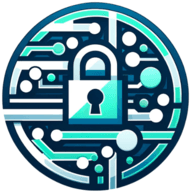In the digital age, data protection has become a pressing concern for businesses worldwide. As cyber threats continue to evolve, so must our strategies to counter them. One such strategy is tokenization, a method that is rapidly gaining traction for its effectiveness in data protection. This blog post delves into the concept of tokenization, its benefits, and how it can be used to bolster data protection.
Understanding Tokenization
Tokenization is a data security method that replaces sensitive data with unique identification symbols, or tokens. These tokens retain all the essential information without compromising its security. The actual data remains safely stored in a secure data vault, far from prying eyes.
The process of tokenization involves taking an input, such as a credit card number, and returning a random string of characters, the token, which has no intrinsic or exploitable meaning or value. The real data is stored securely and is only accessible when the token is presented and validated. This method ensures that even if a data breach occurs, the exposed tokens are useless to the attacker without the original data.
Tokenization is not a new concept. It has been used in various forms for many years, particularly in the payment industry. However, with the increasing volume and variety of data being processed and stored, its application has expanded to other sectors as well.
The Benefits of Tokenization
Tokenization offers several benefits that make it an attractive option for data protection. One of the most significant advantages is the reduction of data breach risks. Since sensitive data is replaced with tokens, the exposure of valuable information during a breach is minimized.
Another benefit is compliance with regulatory standards. Many industries have strict regulations regarding the handling and storage of sensitive data. Tokenization helps businesses meet these requirements by ensuring that sensitive data is not exposed, even in transit.
Tokenization also simplifies the process of data management. With tokenization, businesses can track and manage data more efficiently. It also reduces the scope of audits as auditors only need to focus on the environment where tokenization and detokenization occur.
Tokenization vs. Encryption
While both tokenization and encryption are used for data protection, they are fundamentally different. Encryption transforms data into a coded form that can be decoded using a key. On the other hand, tokenization replaces sensitive data with non-sensitive substitutes.
One of the main advantages of tokenization over encryption is that it eliminates the need for key management. In encryption, the security of the data heavily relies on the security of the encryption keys. If the keys are compromised, so is the data. However, with tokenization, there are no keys to manage or that can be stolen.
Another advantage is that tokenization reduces the scope of compliance audits. Since the sensitive data is replaced with tokens, the auditors only need to focus on the tokenization environment, not the entire data environment.
Implementing Tokenization for Data Protection
Implementing tokenization for data protection involves several steps. The first step is to identify the sensitive data that needs protection. This could be credit card numbers, social security numbers, or any other data that would be valuable to cybercriminals.
Once the data is identified, it is replaced with tokens using a tokenization system. The original data is then stored in a secure data vault. It's crucial to ensure that the tokenization system and the data vault are secure and that access to them is strictly controlled.
After the tokenization process, the tokens are used in place of the original data. If a data breach occurs, the exposed tokens would be useless to the attackers without the original data.
Challenges and Considerations in Tokenization
While tokenization offers many benefits, it also comes with its challenges. One of the main challenges is the integration of tokenization systems with existing systems. This can be complex and time-consuming, especially for businesses with legacy systems.
Another challenge is the management of the tokenization system and the data vault. These need to be secure and access to them strictly controlled. This requires a robust security infrastructure and a team of skilled security professionals.
Despite these challenges, the benefits of tokenization for data protection far outweigh the drawbacks. However, it's important for businesses to carefully consider their specific needs and resources before implementing tokenization.
The Future of Tokenization
As data breaches continue to rise, the need for effective data protection strategies like tokenization will only increase. With advancements in technology, we can expect to see more sophisticated and efficient tokenization systems in the future.
In addition, as more businesses recognize the benefits of tokenization, its adoption is likely to increase. This will lead to more standardized tokenization practices and regulations, further enhancing its effectiveness in data protection.
The future of tokenization looks promising. It offers a robust solution to the growing problem of data breaches, and its importance in data protection cannot be overstated.
Wrapping Up: Tokenization as a Key Player in Data Protection
In conclusion, tokenization presents a compelling solution for data protection. Its ability to replace sensitive data with non-sensitive tokens minimizes the risk of data exposure, making it a powerful tool against data breaches. Despite the challenges in implementation, the benefits it offers make it a worthwhile investment. As we move forward, tokenization will undoubtedly play a crucial role in the realm of data protection.

